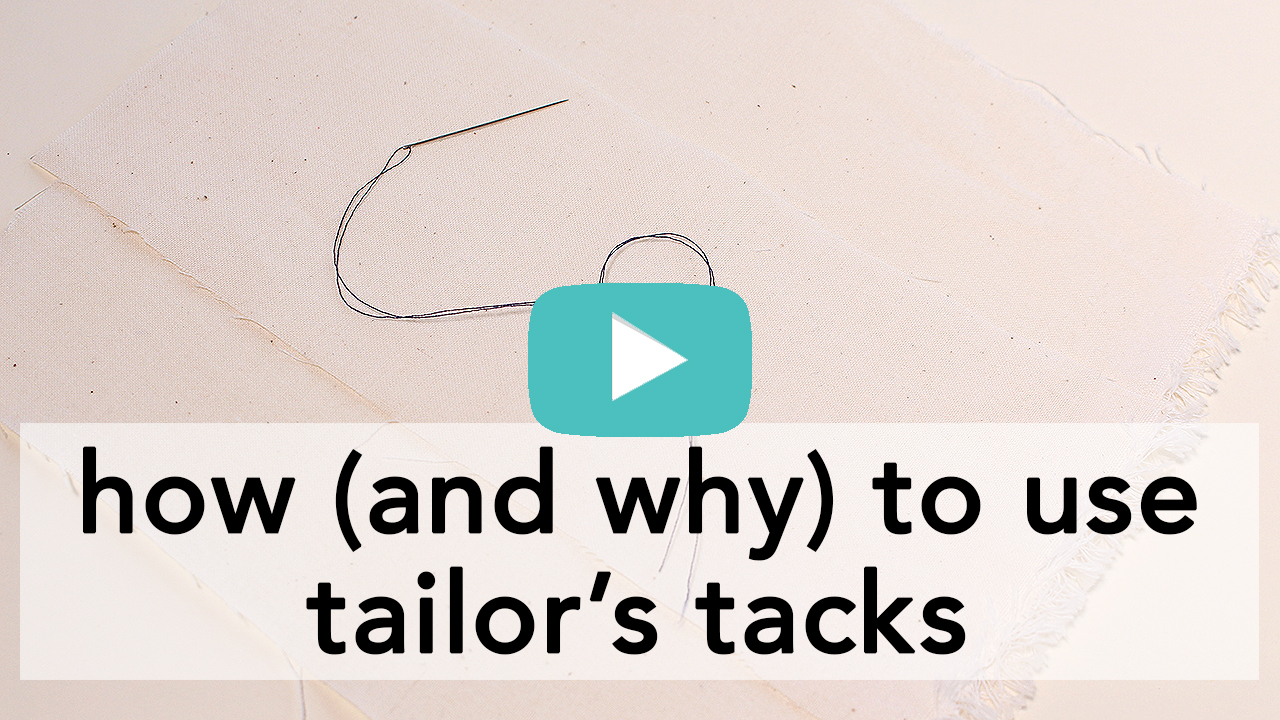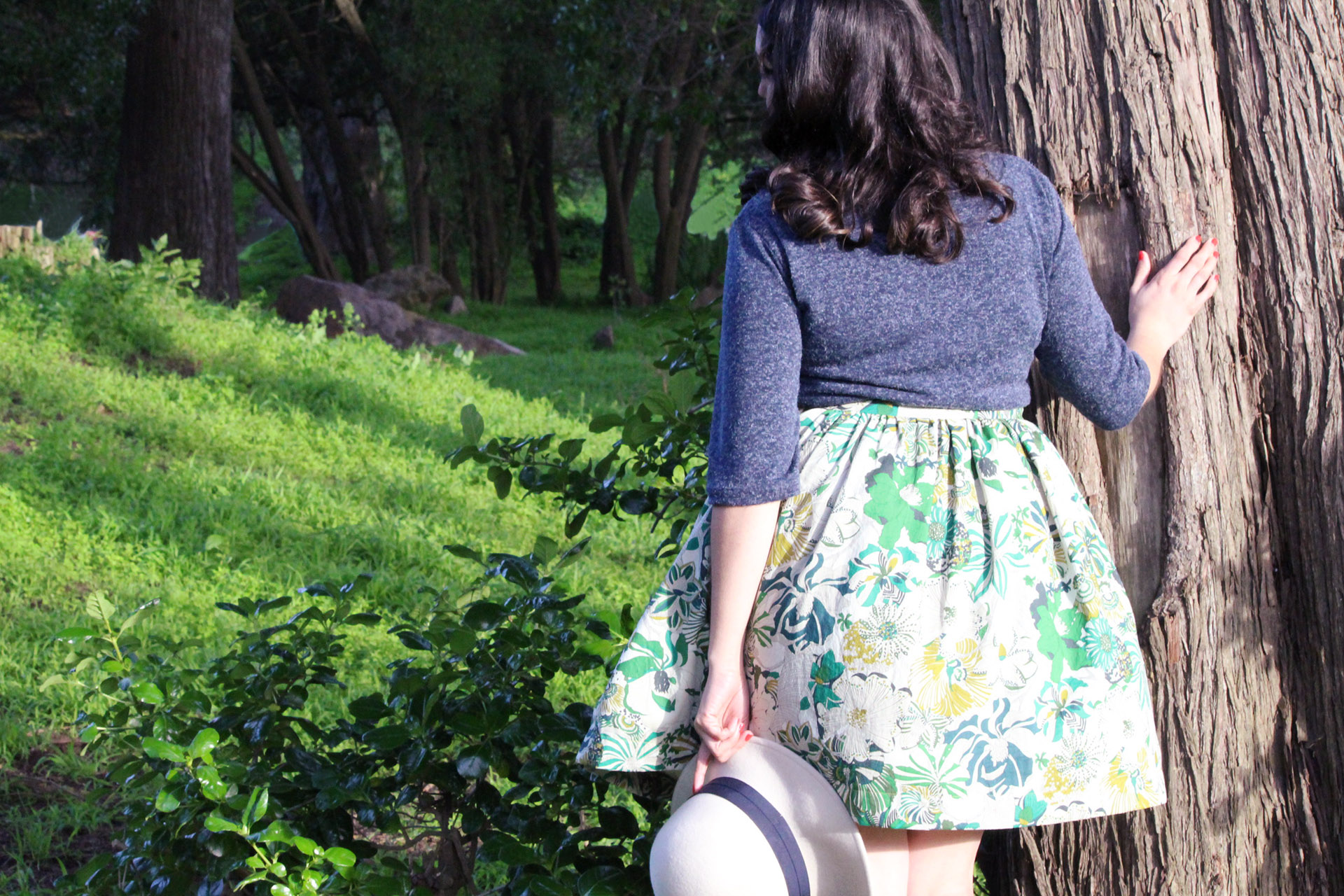Tailor’s Tacks might seem difficult, but I promise you, they’re amazing.
Generally considered couture, they’re a great way to mark your fabric pieces during the sewing process.
Tailor’s tacks carry this unfortunate stigma of being time consuming and just “ew, hand sewing”- but attention to detail counts in sewing, even down to the pattern markings.
Nobody wants a giant hole in their expensive fashion fabric.
At least I THINK most people don’t want that.
One of the most common fabric marking tools is a piercing awl, which is all well and good, except for its single purpose: piercing a hole in your beautiful fabric.
Common places the awl might be used? Dart end points and pivot points, all areas that receive a huge amount of stress when worn. Adding an unnecessary hole to a high stress point is less than ideal.
In the same vein, dress maker’s wheels also pierce fabric and (in general)- the less holes you pierce into your fabric the better.
“But it’s just a tiny hole.”
Taking the time to avoid points where fibers may become damaged over time will protect the integrity of your garment over the long haul.
Think of your favorite pair of nylons or a yummy nylon bra. A tiny hole or snag in that will cause unraveling and before you know it, there’s a giant hole where there wasn’t one before.
The second most common fabric marking tools are water-soluble markers.
Water-soluble markers are great for knits and garments that will be laundered repeatedly. However, depending on the type of garment you’re making, laundering and water submersion might not be what you’re into.
There’s a full list of fabrics that should probably avoid water and unnecessary moisture such as wools, silks, and special occasion fabrics. A pink or blue mark at a dart point is not cute, especially when you can’t wash it out.
Tailor’s chalk might be a good option as replacement to a water soluble marker, however pattern pieces may need to be marked individually, which can also become time consuming.
Practice your tailor’s tacks before rolling them out for a garment.
A few practice tries on a couple scraps of fabric only take a few minutes and you’ll be using tailor’s tacks in no time!
Step One: Consider the thread and needle combination.
Chose thread that will stand out against your fabric. Black fabric? White thread. Grey fabric? Yellow or red thread. Chose something that will be bright and easy to use instantly (no more searching for awl piercings!)
The needle you use to create the tailor’s tacks should match the fabric you’re working with, in a similar way that your sewing machine needle matches your fashion fabric. Thin needles for delicate fabrics and chiffons, thicker needles if you’re using a denim or thick wool.
Double your thread, but don’t knot it.

Step Two: Create your tailor’s loop.
Push your needle through the fabric, leaving an inch to two inch tail, and pull your needle back up through your fabric to make a stitch.

Double back your needle to the starting point, again pulling your needle back up through your fabric, leaving a one inch loop.
Snip your loop and snip the new tail, leaving an inch or two.
Step Three: Pay special care when marking multiple layers.
When marking multiple layers, start by following the video above.
Snip the tail and loop.
Slowly separate the layers of fabric, evenly spacing out the threads. Snip between the fabric layers.

Mishaps occasionally happen when you make a tailor’s tack.
Tangled threads while making your loops, or even pulling the completed threads out by accident. They happen! But.
Remarking tailor’s tacks is quick and easy and sure as hell beats piercing the sh*t out of your fabric for no reason.
Even better, the more you practice marking your fabric in this way, the faster it’ll be.

















